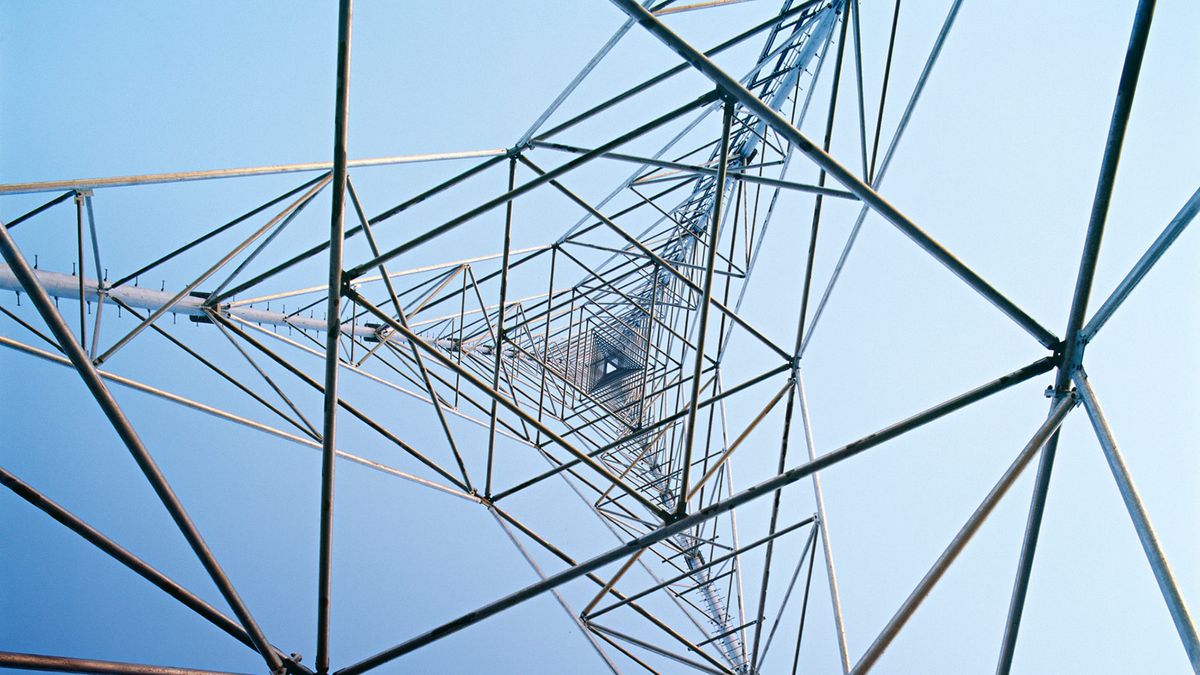
Let’s say that you are trying to build a radio tower for radio station 680 AM. It is transmitting a sine wave with a frequency of 680,000 hertz. In one cycle of the sine wave, the transmitter is going to move electrons in the antenna in one direction, switch and pull them back, switch and push them out and switch and move them back again. In other words, the electrons will change direction four times during one cycle of the sine wave. If the transmitter is running at 680,000 hertz, that means that every cycle completes in (1/680,000) or 0.00000147 seconds. One quarter of that is 0.0000003675 seconds.
At the speed of light, electrons can travel 0.0684 miles (0.11 kilometers) in 0.0000003675 seconds. That means the optimal antenna size for the transmitter at 680,000 hertz is about 361 feet (110 meters). So, AM radio stations need very tall towers. For a cell phone working at 900,000,000 (900 MHz), on the other hand, the optimum antenna size is about 3 inches or 8.3 centimeters. This is why cell phones can have such short antennas.
You might have noticed that the AM radio antenna in your car is not 300 feet (91 meters) long — it is only a couple of feet long. If you made the antenna longer it would receive better, but AM stations are so strong in cities that it doesn’t really matter if your antenna is the optimal length.
You might wonder why, when a radio transmitter transmits something, radio waves want to propagate through space away from the antenna at the speed of light. Why can radio waves travel millions of miles? Why doesn’t the antenna just have a magnetic field around it, close to the antenna, as you see with a wire attached to a battery? One simple way to think about it is this: When current enters the antenna, it does create a magnetic field around the antenna.
We have also seen that the magnetic field will create an electric field (voltage and current) in another wire placed close to the transmitter. It turns out that, in space, the magnetic field created by the antenna induces an electric field in space. This electric field in turn induces another magnetic field in space, which induces another electric field, which induces another magnetic field, and so on. These electric and magnetic fields (electromagnetic fields) induce each other in space at the speed of light, traveling outward away from the antenna.






